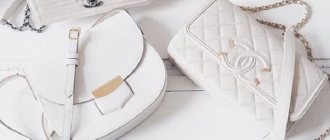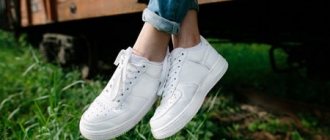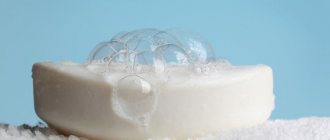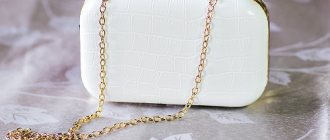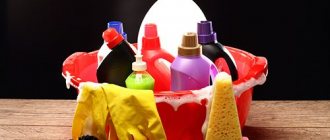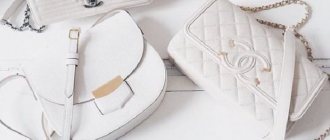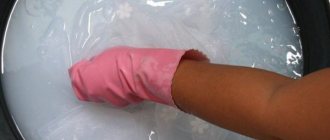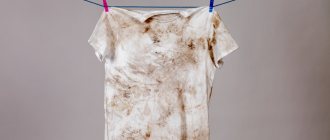Furniture made from eco-leather has excellent characteristics and costs much less than a similar option made from genuine leather.
During operation, abrasions, cracks, stains and snags may occur, which sooner or later will lead to the formation of bald spots and holes requiring expensive repairs.
If you think the only way to prevent this is to use protective covers. Then what is the point of spending money on such furniture, the beauty of which will always be hidden under the mask of bedspreads?
There are other ways to care for eco-leather furniture that will preserve its original appearance after many years of daily use.
What products should not be used when caring for eco-leather?
Eco-leather requires delicate handling, and in order not to cause irreparable harm to the material, you should take into account a number of prohibitions.
When cleaning eco-leather products, the following is unacceptable:
- use brushes, even with soft bristles;
- use powders containing abrasive particles and bleaching components;
- clean eco-leather with compounds containing chlorine and acids;
- remove stains from the surface of the material using bleaches and solvents;
- treat the material with products intended for other types of fabrics.
In addition, when drying eco-leather products in the fresh air, they should be placed under a canopy; in the sun, the material can become deformed and burn out.
Items made from eco-leather and other synthetic materials require careful care. Depending on the type of contamination, different cleaning agents are allowed.
The following can be dangerous for any product made from eco-leather or leatherette:
- excess moisture;
- exposure to high temperatures;
- cleaning with a steam generator;
- abrasives.
Chemical solvents should be used with caution. Some of them can damage the surface.
You cannot use powdered soda, brushes or hard sponges - they will leave scratches, dirt will penetrate deeper, and it will be impossible to get rid of them. If the surface is glossy, dull spots will remain on it after cleaning with abrasive agents.
What is harmful to artificial leather?
The natural material from which shoes, clothing, and furniture upholstery are made is durable and elastic, but is expensive, and animals are killed for its production. The basis for eco-leather is cotton fabric, onto which polyurethane is applied.
The artificial material does not cause allergies, is not afraid of ultraviolet rays, is durable and wear-resistant, and does not become hard in the cold.
High humidity
Eco-leather does not allow water to pass inside. The machine is not suitable for washing products made of two-layer material; the dirt on them is not washed off with water. Strong humidity has a negative effect on fabric.
Heat
Eco-leather allows heat to pass through well, products made from it do not fade in the sun, but they overheat strongly; washing in hot soapy water is not recommended.
Cleaning with a steam generator
Synthetic fabric with a polyvinyl chloride coating is not inferior in technical characteristics to leather, looks similar to natural material, but if not properly cared for, it loses its attractiveness. You cannot clean products made from it with a steam generator.
Abrasives
If you wipe eco-leather with a hard brush or pumice stone, scratches, microcracks, and small cuts appear on the surface. The fabric is damaged when cleaning with abrasive materials and does not tolerate chlorine.
Daily care rules
Furniture upholstery and clothing made from light eco-leather remain attractive and do not wear out for a long time if the products are regularly and properly cared for:
When cleaning stains, do not press on the surface of the car seat cover or upholstery. A sofa or chair made of two-layer material should be installed away from radiators, making sure that direct rays of the sun do not fall on things.
How to clean leatherette from household dirt?
- Before you start cleaning the sofa, you need to prepare the required cleaning products so that you have access to them at any time;
- It is necessary to cover with film the area in which the sofa will be cleaned, or remove the carpets on the floor;
- The light should be evenly distributed over the entire surface to be cleaned;
- Emergency drying of the product through direct sunlight and radiators is not allowed;
- The use of products containing chlorine, acetone, 100% alcohol, and chemicals should be avoided;
- To avoid damaging the integrity of the fabric, do not use brushes with hard bristles or sharp objects.
- fabric napkins, sponges: melamine, soft;
- wet wipes for leather/leatherette products;
- ammonia;
- hydrogen peroxide;
- vodka;
- nail polish remover;
- lemon juice;
- colorless cream;
- stain removers for special purpose leatherette;
- Polish for hair;
- glass washing liquid;
- “Vinet” is a dry cleaning product.
- dissolve ammonia in water;
- soak a sponge in the mixture;
- treat the stain.
- Spray the rag or the dirt itself with varnish;
- wipe;
- If there is no result, perform the manipulation again.
- dip a rag in the substance;
- rub the stain until it is completely removed;
- soak the sponge in a diluted soap solution;
- treat the cleaned area with soap foam;
- rinse with water;
- dry.
- chocolate stains can be quickly and effortlessly removed with glycerin soap;
- bitumen and resin stains are removed from leatherette using a sponge moistened with ethyl alcohol (90%) or turpentine oil;
- stains left by red wine or drinks are removed with a sponge soaked in diluted vinegar or soap suds;
- children's drawings with a marker on furniture can be removed with a melamine sponge: rub the stain until it disappears completely;
- Grass and grease stains are eliminated with natural lemon juice, which also provides the leatherette with shine.
Eco-leather, like many synthetic materials, does not like moisture too much. For this reason, items made from this fabric should be washed only in extreme cases, and if there is minor dirt, simply clean it.
To do this, it is recommended to use special products that are easy to find in household chemical stores and act in accordance with the attached instructions. But if it was not possible to purchase the composition, it is permissible to use available materials.
You can remove street dust, dirt and stains from the surface using simple means:
- toilet and laundry soap;
- ammonia;
- shaving foam;
- lemon;
- hydrogen peroxide (only for light-colored eco-leather).
Any of the selected products will cope with minor stains no worse than a special composition. To do this, just dissolve it in water and apply it to the surface, then wipe the material with a damp sponge. If we are talking about local cleaning, when it is necessary to remove a stain, it is permissible to use the listed products in their pure form.
Daily care
Seats, sofa armrests, and bags made of white material become greasy over time and acquire a yellow tint. Denim clothing leaves bluish or gray stains on the seat. How to wash eco-leather from everyday dirt?
For this you will need:
- laundry soap;
- dishwashing liquid;
- wet wipes for caring for leather items;
- citric acid solution or lemon juice to whiten the surface;
- automotive leather cleaning products;
- melamine sponge eraser.
When choosing a car product for eco-leather, you will have to experiment - not all of them cope with dirty deposits in the same way; sometimes using laundry soap is easier and more effective.
Citric acid or hydrogen peroxide provide good whitening. The second, moreover, kills bacteria, which is useful for animal owners.
How to care
Caring for synthetic material with a polyurethane coating has its own characteristics. Eco-leather clothes do not become hard or crack; the upholstery retains its shape if you wash things by hand and not in a machine.
Products cannot be cleaned with compounds that contain aggressive acids or sodium chloride.
Dust that has settled on the surface of artificial leather must be regularly removed with a wet cloth; do not soak the two-layer material in water. You should rub stains not with a brush, but with a foam rubber or melamine sponge. It is not recommended to dry synthetic leather clothes in the sun, with hot air from a hair dryer, or to place sofas near radiators or electrical appliances.
Light-colored material turns yellow over time; citric acid, a mixture of milk and egg white, and hydrogen peroxide restore the color. To prevent contamination, dust accumulation, and soften eco-leather, after each cleaning the surface is treated with a conditioner containing silicone, which forms a protective film.
692 Author of the article: Svetlana Gladkova Reading time: 5 min.
There are few special products for cleaning eco-leather. The demand for them is very low, since most stains can be removed with more affordable products:
Most special substances for cleaning eco-leather are used in dry cleaning of car interiors, but they can also be used at home. Among them:
In a store with household chemicals, it is better to immediately contact a sales consultant.
Attention! Substances contraindicated for eco-leather:
How to properly wash a white sofa made of eco-leather or leatherette
Eco-leather does not need to be wet much; all work is carried out with a wrung-out cloth. For washing you need a soft sponge and two dry cotton or microfiber cloths. You need to wipe off the dust first so as not to roll the fluff across the surface.
The procedure is as follows:
- Apply a small amount of cleaning solution or foam with a sponge. Rub gently.
- Remove the composition with a clean damp cloth.
- Wipe with a dry cloth to remove any remaining moisture.
- Apply a protective agent with silicone - it softens the surface, adds shine and forms a film that prevents contamination. Be sure to wipe off excess with paper towels.
Unfortunately, housewives also have to wash more complex stains. Tips for removing common stains will help keep your white finish clean.
White eco-leather should be washed with special products and a soft cloth.
The practicality and availability of leatherette allows you to buy a beautiful sofa model at a fraction of the price. But such upholstery is finicky to care for. If you do not take into account some of the nuances of handling such materials, you can easily damage the furniture.
We suggest you familiarize yourself with How to remove a tomato stain
How to wash a surface made of eco-leather or leatherette:
- Do not get the upholstery too wet; if possible, use dry cleaning. Spilled liquid must be blotted up immediately, otherwise the skin may become deformed.
- Fresh stains should be wiped with a soft sponge and a foamy solution of laundry or baby soap. The sooner the treatment is carried out, the higher the chances of removing the mark completely.
- To remove stubborn stains, use non-aggressive detergents. If performance is low, switch to stronger formulations.
- Do not use too hot water or ice, as eco-leather does not tolerate thermal effects well.
After using any cleaning products, be sure to rinse off the chemicals, then wipe the upholstery with a clean rag, which will absorb any remaining moisture.
How to clean a white leatherette sofa?
- dilute a soap solution from a detergent, especially for delicate washing of silk and synthetic items;
- Wipe the contaminated area with a soft cloth;
- rub without pressing;
- Use a damp cloth to remove any remaining product;
- wipe until completely dry.
- mix ammonia (1 tbsp) and dish soap (0.5 tsp) in cold water (1 cup);
- moisten the contaminated area with the resulting mixture;
- scrub the stain with a toothbrush;
- Use a cloth soaked in water to remove any remaining mixture;
- repeat the procedure when the contamination is intense.
- soak a cotton swab in hydrogen peroxide;
- apply to the stain for a few seconds;
- rub vigorously;
- if the result is insufficient, repeat the manipulations by adding a few drops of ammonia to the swab;
- treat with a damp cloth;
- wipe until completely dry.
- apply a little foam to the stain;
- gently rub into skin;
- wait for a period of time;
- soak a rag in water;
- remove the product.
- gently rub the contaminated area;
- treat the wiped area with shoe polish (colorless) to cover the leatherette with a film, which will protect it from further negative influences from the outside.
Stains on a white sofa are especially noticeable, so they need to be removed immediately
When buying furniture with light upholstery, especially a white leather sofa, you need to be prepared for regular cleaning. Such things look impressive in the interior, but even careful use does not guarantee perfect cleanliness.
How white eco-leather can get dirty:
- organic matter, in particular dropped food;
- dirt from pets' paws;
- dust accumulating on the surface;
- marks from felt-tip pens, fountain pens or pencils;
- stains from paint, including contact with bright clothing.
Often you have to clean greasy seats and backrests and remove stains of unknown origin that have ingrained into the upholstery.
Main pollution and their causes
When buying a light skirt or dress, purchasing a sofa or chair made of artificial material coated with a layer of polyurethane, you must not forget that white items will have to be cleaned often. Leatherette allows air to pass through well, but quickly becomes dirty, a coating forms on it or yellowness appears, and stains remain:
- from watercolor and oil paint;
- gouache and felt-tip pens;
- from plasticine and pens;
- food and chewing gum.
Dust accumulates on the surface of eco-leather, leaving traces from the paws of pets. The fabric can be cleaned normally, but you need to choose the right product.
Traces from pens and felt-tip pens
If there are children at home, the question of removing traces of their art sooner or later arises in every mother. Fortunately, modern felt-tip pens can be easily washed off with water, but the same cannot be said about ballpoint pens and markers.
Ballpoint pen ink is the most difficult stain to remove. They must be removed as quickly as possible so that the dye does not become embedded in the coating. If the ink is not dry, there is a chance to wash it with soap and a melamine sponge. After drying, you can whiten the surface stained with a pen in several ways.
- Method 1. Nail polish remover. Cleans off fresh ink, markers, and gel pens.
- Method 2. Hairspray. Apply, wait a couple of minutes, wipe off with a cotton pad, repeat if necessary.
- Method 3. Leather polish and solvent for polyurethane glue. First, treat the surface with polish or conditioner to protect it, wait 5 minutes, and then wipe the stain with a solvent. When used correctly, this treatment removes even old hand marks without harming the leatherette.
Methods using slaked soda, alcohols, and citric acid will remove the ink of gel pens and water-alcohol-based markers. Since ballpoint pen paste has a wax-fat composition, these methods will be ineffective for it.
How to remove household stains from leatherette
To remove traces of tea and coffee from your skin, you need to do the following:
- Ammonia should be diluted in water;
- soak a sponge in this mixture;
- rub the stain;
- Remove the remains with a napkin.
Ballpoint pen stains can be removed with hairspray or glass cleaning solution.
- the selected product should be sprayed generously onto a rag or directly onto ink marks;
- rub the stain until it disappears;
- if this does not happen, then you should add the product to the stain and rub again;
- Remove residues with a damp cloth;
- dry the area with a napkin.
Traces of oil paint are removed using purified turpentine:
- the sponge is moistened in the substance;
- rub the stain until it disappears completely;
- Use a soapy solution to wash the treatment area;
- dry with a napkin.
If you can determine the origin of the stain, then removing it will be much easier. Each of the contaminants requires its own approach. For example, chocolate can be easily scrubbed with glycerin soap. Remains of bitumen and any resin are removed with 90% ethyl alcohol. You can also use turpentine oil. Red wine can be removed with a mixture of vinegar and soap suds.
You should also remember that a fresh stain is always easier to remove than an old one. Therefore, as soon as contamination has been noticed, action must be taken. Rubbing too intensely on the surface of a leather product will damage it. All manipulations must be careful. If you have the opportunity to contact specialists, do not neglect it.
Blood stains
Fresh stains are washed off with regular cold water. You can also apply a cotton swab soaked in 3% hydrogen peroxide to the stained area, leaving it for 2-3 minutes. The stain will dissolve. A soap solution with 5% ammonia will help remove old stains.
Wine, champagne, cognac, liqueur, mustard
You can clean artificial leather from such contaminants with a soap solution to which vinegar essence has been added in the proportion of 1 tablespoon to 1 glass of water. Instead of essence, citric acid diluted with water is also suitable.
Chewing gum, resin, plasticine
We suggest you read: How to remove smoke from the bottom of a pan
Wipe off with a cotton pad soaked in ethyl alcohol.
Coffee, chocolate, eggs, milk, tea
Can be washed with a soft sponge and soapy water. After removing stains, rinse the surface with water.
Fruit juices, jam, adjika, ketchup
Use a neutral detergent (soap solution) with the addition of 10% ammonia or citric acid.
Grease, cream, oil, ink, greasy lipstick
If the surface is heavily contaminated, use ethyl alcohol or turpentine. In other cases, a soap solution will be sufficient.
Oil paint
It is cleaned with turpentine oil, then the surface is treated with a neutral detergent and washed with water.
Nail polish
Use nail polish remover.
Decorative cosmetics
To remove such stains, a soap solution, 30% ethyl alcohol or 5% ammonia solution is suitable.
Yellowness on white leatherette, green grass stains
Squeeze fresh lemon juice and rub it over the surface. It will help deal with stains and add shine to leatherette.
Remember that after each treatment of the product with the above-mentioned products, you need to rinse the cleaned surface with clean water and wipe dry. Learn to care for leatherette correctly, then your things will always please you with an excellent appearance.
Drink Stains
At home, it is quite possible to wash traces of drinks from a white sofa. The main thing is to act quickly so that the liquids do not have time to be absorbed.
- Use a dry cloth or napkins to collect any remaining spills from the surface. If you don't have paper towels or a rag on hand, you can sprinkle salt, then collect it along with the absorbed drink.
- Wipe the stained area with hydrogen peroxide, an aqueous solution of vinegar or citric acid, if the pigment remains. The proportions of 9% vinegar to water are the same as when using acid: one to one.
- After treatment, wash the leatherette with soapy water or wipe with damp cloths, dry the surface with towels.
Safe products and tools
Leatherette and eco-leather are popular because of their practicality. This coating is washable and does not require complex maintenance. Most stains can be easily removed with soap, but some stains will require a little more effort.
- Food stains - greasy marks, chocolate - are washed off with dish gel marked “Anti-grease” or laundry soap.
- Stains from berries and grass should be bleached after washing with citric acid or hydrogen peroxide.
- The blood is immediately washed off with cold water, and a cotton pad with ammonia is placed on old stains. Then scrub, adding ammonia as needed.
- Nail polish, acrylic paint, brilliant paint are washed off with nail polish remover.
- Chewing gum and plasticine are first carefully wiped off with a gauze swab, and the residue is removed with alcohol.
- Gouache and watercolor can be washed with liquid soap and a melamine sponge.
- Oil paint can be wiped off with turpentine.
White eco-leather is easy to clean with a melamine sponge
You can clean a white leatherette sofa with a soft melamine sponge, cotton rags, dry and wet wipes. Excessive force should not be applied so as not to damage the capricious material.
Mechanical tools and brushes with hard bristles should not be used. They can scratch the surface, which will have a much worse effect on the appearance of the upholstery than the stain you are trying to remove.
Special preparations for the care of leather and faux leather products are best suited. They can be purchased at household chemical departments, car service centers, leather and shoe stores.
All products differ in release form:
- liquid solutions;
- aerosols;
- foam;
- impregnated napkins;
- pastes;
- gels.
Detergents should not contain chlorine or aggressive chemical compounds. Typically, store-bought preparations contain isopropyl alcohol, ammonia or ammonia in varying concentrations. You can safely use LOC liquid bleach from Amway, Bagi “Super Leather”, Flat, Pufas “Glutoclean”, Unicum and others.
If you are unwilling or unable to purchase a special composition for caring for leather products, you can make the necessary product yourself. Home remedies treat stains in different ways. It depends on the age and type of contamination.
What compositions can be used for a leatherette sofa:
- A soap solution made from laundry or baby soap will help wash away fresh dirt.
- An alcohol solution (from 20 to 50%) will cope with pen stains and greasy areas.
- Lemon juice or vinegar, diluted in half with water, will remove stubborn dust and dirt. After washing, be sure to wipe off the acid with a damp cloth.
- A weak solution of ammonia (no more than 5%) is good for removing old stains.
- Hydrogen peroxide from your home medicine cabinet will help remove various stains.
- Shaving foam refreshes the surface well.
You need to moisten a cotton pad or sponge with any homemade composition and apply it to the stain. Then rinse off any remaining detergent with clean water and wipe the upholstery dry. Finally, treat the material with a silicone sponge to restore its shine.
Disinfection
Any surfaces in the house need periodic disinfection, which will help reduce the concentration of pathogenic microorganisms. And the eco-leather sofa is no exception. The following means can be used for this purpose.
| Name | Frequency | Sequencing |
| Baby liquid soap | 1 time per month | Dissolve a teaspoon of soap in a glass of warm water until it foams. Moisten a soft cloth in soapy water, twist it well and walk over the entire surface. The cloth should be rinsed periodically in soapy water. |
| Water with lemon juice | Once every 2-3 months | For 1 liter of warm water you need to take 3 tablespoons of lemon juice. First, you should treat the armrests and headrests where there are visible areas of grease. Next, use a damp cloth to go over the remaining areas. |
| Water with ammonia | Once every 6 months as a preventive measure | You need to dissolve 4 tablespoons of ammonia in 1 liter of warm water, moisten a soft rag and walk over the entire sofa. If there are stains, you can linger on them and treat them several times |
| Special antibacterial wipes for leather furniture | Daily or as needed | Take the napkin out of the pack, unfold it and apply it to the recommended area. If there is a lot of furniture, then you need to use more than one napkin, but change them as they become dirty. |
Disinfection should be carried out as soon as it gets dirty. If the furniture is rarely used, then once a month is enough. With high traffic, treatment is needed daily.
General recommendations
There are special wet wipes that are designed for everyday care of leather and leatherette items. They are designed to remove dust and minor dirt. Try using them first if the stain is fresh. If success is not achieved, read the recommendations below.
Dried stains do not need to be scraped off when cleaning leatherette products. Also, do not use detergents with solvents containing petroleum products. Strong acids and alkalis should also be avoided. Therefore, dishwashing and plumbing detergents will not work for you. Dampen the old stain with a neutral soap solution.
- It is easier to remove fresh stains than old ones;
- Do not rub the artificial leather surface excessively;
- Avoid using abrasive cleaning products;
- systematically clean leatherette furniture;
- It’s easy to add shine to a product: silicone-impregnated sponges contribute to the formation of a protective film;
- Before treating the entire surface, test the selected products on a small area of skin that is out of sight;
- If there is an opportunity to resort to the help of specialists, it is worth taking advantage of it.
As you can see, the presented methods for cleaning leatherette are simple, and the variety of means adds confidence in the presence of one of them nearby when needed. When the opportunity arises to practically test their effectiveness, do not neglect the recommendations given by our specialists in order to avoid the opposite result!
We suggest you familiarize yourself with How to remove black stripes from shoes: home methods
All kinds of grease stains of organic origin do not pose a danger to leatherette: the stain is wiped with a dry cloth and left for a certain period.
How to clean white leatherette
Tips and Cautions
Before you start searching for how to remove stains on leatherette, you should understand some of the features. One of the key factors is how old the stain is. fresh stains are very easy to remove. Often it is enough to simply wipe off the dirt with a damp cloth. Old, stubborn blots will be more difficult to clean off, especially if they have time to soak in thoroughly. Therefore, it is best to immediately clean leatherette from stains as soon as they appear.
Experts do not recommend using brute force and abrasive agents during the cleaning process. They can damage the surface, deform or simply tear. Old stubborn stains from leatherette cannot be removed with a knife or scissors. This will result in the product being torn or cut. Then the furniture will be completely damaged and returning it to its original appearance will be very problematic.
Also, you cannot use various potent compounds:
- Products intended for cleaning toilets and plumbing fixtures. Manufacturers add acids and alkali to them for efficiency. These components can completely ruin leatherette items.
- Solvents. They can damage the paint that is applied to the material during the manufacturing process. The use of some solvents is allowed, but only from high-quality and reliable manufacturers.
- Compositions containing petroleum products and their derivatives. Before starting work, be sure to study the composition of the product you plan to use.
The nature of the stain is of great importance when choosing a cleaning composition. The most popular contaminants are ink, grease, dust, and food. Now in more detail about how you can save leatherette products at home.
Rules for drying eco-leather products
Paradoxically, furniture and things made of white leatherette have advantages over colored ones, because when scrubbing their surface, there is no risk of washing off the dye and getting a lightened stain.
7 simple truths about stain removal:
- It is easier to remove fresh stains.
- All stain removers must first be tested on an inconspicuous area of the product.
- Do not scrape off dirt or use abrasives.
- It is necessary to erase traces of brush, paints, and brilliant green, moving from the edges to the center.
- When removing a stain, you need to change the cotton pads more often so as not to smear the dirt.
- Cotton balls should be proportionate to the size of the stain. It is better to remove some stains with cotton swabs - this will reduce the area of treatment, and therefore the risk of rubbing off pigmentation and damaging the surface.
- Eco-leather conditioner will help protect a white sofa, armchair, and chair upholstery - it must be applied after each wash. The silicone film on the surface will prevent the absorption of dirt.
When purchasing items made from leatherette, it is advisable to ask the seller about the type and composition of the material, and also to keep the flap that the manufacturer attaches to the label of the product or furniture. On this piece you can test the effect of stain removers, if necessary.
In the process of cleaning eco-leather, it is important not only to follow the basic washing rules, but also to carefully dry the item.
- After washing, place the item in a basin and allow the water to drain.
- Lay the item out on a large towel, carefully straightening out the folds.
- Cover the product with a second towel, pressing slightly on the terry cloth with your hands. This will help remove excess moisture.
After the towel has absorbed excess water, the dress, jacket or jacket will need to be hung on hangers until completely dry. And skirts, trousers, car or furniture covers are dried in a horizontal position.
Sometimes minor abrasions appear on eco-leather products after washing. It is easy to eliminate this defect by using special paint designed for this type of material.
When storing eco-leather items for seasonal storage, you need to make sure that they retain their original shape and that folds and creases do not form on the surface. This can be achieved by following simple recommendations.
- Place products in cool areas, away from light and heat sources.
- Hang your clothes on hangers, choosing them exactly according to the size of the item.
- Use fabric covers, since polyethylene does not allow air to pass through well and does not allow the material to “breathe.”
- Dresses with straps and bags should be stored in bags, since the product may become deformed if left in a “hanging” position for a long time.
- Before putting the item away for storage, you should carefully straighten out all the folds and creases.
If clothes removed from the closet are wrinkled, you can put them in order by slightly moistening the surface and drying it naturally. Ironing eco-leather is strictly prohibited.
The listed recommendations will allow you to preserve things made from artificial materials in their original form for a long time and significantly extend their service life.
How to wash properly
White eco-leather gets dirty quickly, products made from it can be washed, but you should not make rough movements or rub with force. Stains on things made of artificial material should be removed immediately after they appear, using a soft sponge or foam rubber.
Soap solution
Eco-leather is cleaned in different ways, dirt is removed using household products, but formulations containing chemicals are not used, as they can react and damage the material. To wash white artificial leather, you need to soak a sponge in liquid and then apply the product.
To remove grease stains from upholstered furniture, strollers or skirts:
Eco leather is wiped with the soft side of the sponge. After removing traces of grease, the material is dried with a cloth.
Ammonia and dishwashing detergent
It is not always possible to remove old stains on white furniture and light-colored clothing using liquid and laundry soap. The contaminated surface is moistened with a solution of a glass of water and a spoon of ammonia, rinsed and washed with Fairy dish gel, and lubricated with glycerin.
Shaving foam
Artificial leather does not tolerate moisture well. To clean a sofa, armchair, or car seat upholstered in this material:
After such cleaning, light-colored furniture gets less dirty and looks well-groomed and refreshed. It is better to wipe eco-leather not with expensive foam, but with cheap foam.
Wet wipes
You should try to wet a sofa covered with a two-layer material less, as it absorbs moisture and stains form on the surface of the upholstery.
If eco-leather products become dirty, it is recommended to wipe them with a wet cloth soaked in a special moisture-resistant compound.

